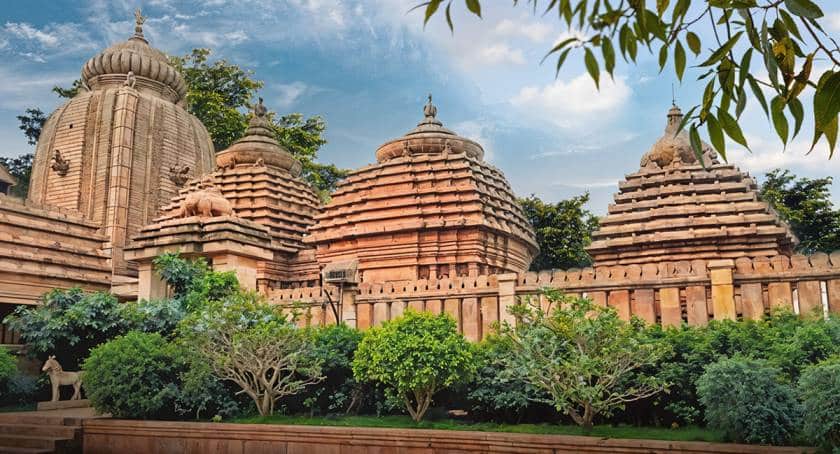Maa Tara Tarini Temple: A Divine Abode of Shakti in Odisha
Maa Tara Tarini Temple, located above the scenic Kumari Hills in Ganjam, Odisha, is one of India’s most revered Shakti Peethas. Hindus believe Goddess Sati’s breasts fell here, transforming it into a powerful center of divine energy. The temple, dedicated to Maa Tara and Maa Tarini, showcases stunning Kalinga architecture and offers breathtaking views of the Rushikulya River. Thousands of devotees visit, especially during the grand Chaitra Mela. With its deep spiritual significance, rich history, and serene surroundings, it remains a must-visit pilgrimage site.
The Mythological Significance of Maa Tara Tarini Temple
Where the Goddess Sati’s torn bodily parts fell, is one of the 51 Shakti Peethas in Hindu mythology. Hindus believe that her breasts fell at this site, transforming it into a powerful center of divine feminine energy. To stop Lord Shiva’s cosmic dance of destruction (Tandava), Lord Vishnu used his Sudarshan Chakra to dismember Sati’s body, which fell in different places, forming the Shakti Peethas.
It is regarded as the presiding deity of this temple, representing the twin goddesses Tara and Tarini, who are considered sisters. Their worship is deeply rooted in Tantra practices, and the temple is a key center for Shakti worshippers.
The Architectural Wonder of the Temple
The Maa Tara Tarini Temple exhibits the traditional Kalinga style of architecture. The sanctum sanctorum houses the stone idols of the twin goddesses, adorned with gold and silver ornaments, flowers, and sindoor. Unlike conventional temple idols, two ancient stone formations represent the deities here, and devotees revere them as self-manifested forms of the goddesses.
The temple complex includes a vast prayer hall, several lesser shrines, and a majestic entryway leading to the main sanctum. The panoramic view from the temple, with the Rushikulya River flowing at the foothills, adds to its divine aura and scenic beauty.
Spiritual and Cultural Significance
It is a religious site and a center of cultural and spiritual activities. The temple attracts pilgrims, spiritual seekers, and history enthusiasts alike. Devotees believe that visiting the temple and offering prayers to Maa Tara Tarini can fulfill their desires, bring prosperity, and remove obstacles from their lives.
The temple is especially significant for people who wish to perform Mundan (tonsure) ceremonies for their children. It is a long-standing belief that offering a child’s first hair to the deity blesses them with good health and a prosperous future.
Major Festivals Celebrated at Maa Tara Tarini Temple
The temple is a hub of grand festivities, with thousands of devotees gathering to celebrate significant religious occasions. Some of the most notable festivals include:
1. Chaitra Mela (Chaitra Yatra):
- The most famous festival celebrated at Maa Tara Tarini Temple is the Chaitra Mela, held in Chaitra (March-April). It is a month-long festival, with the most significant days falling on Tuesdays, considered auspicious for goddess worship.
- Devotees throng the temple, offering the goddesses coconuts, flowers, and sindoor. Many also rigorously climb the 999 steps to the temple as an act of devotion.
2. Durga Puja and Navratri:
- During the nine days of Navratri, devotees celebrate grandly at the temple with special pujas and cultural performances.
- Devotees observe fasting and participate in religious discourses and devotional songs.
3. Makar Sankranti and Maha Shivaratri:
- Devotees mark the festival of Makar Sankranti with unique offerings and rituals dedicated to the goddesses.
- On Maha Shivaratri, a grand festival is held to honor Lord Shiva and thousands of devotees visit the temple for night-long prayers and festivities.
Rituals and Offerings
Devotees visiting Maa Tara Tarini Temple engage in various rituals and offerings to seek divine blessings. Some of the standard offerings include:
- Coconut Offering: Breaking coconuts at the temple premises is a symbolic act of surrender and devotion.
- Sindoor and Flowers: Offering sindoor (vermilion) and flowers to the goddess is considered auspicious.
- Mundan Ceremony: Many families bring their children for the tonsure ceremony as a form of thanksgiving to the goddess.
- Climbing the 999 Steps: Devotees consider climbing the steps a penance and a way to show their dedication.
Final Thoughts
It is symbolizes faith, devotion, and divine energy. Its mythological, historical, and architectural significance makes it a must-visit pilgrimage site for devotees and tourists alike. Whether you seek spiritual enlightenment, a cultural experience, or simply wish to bask in the natural beauty surrounding the temple, a visit to Maa Tara Tarini Temple will surely be a soul-enriching journey.
Plan your visit to this sacred Shakti Peetha and put yourself in Maa Tara Tarini’s heavenly aura. You will experience an unparalleled sense of peace and devotion.


